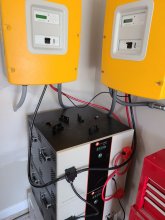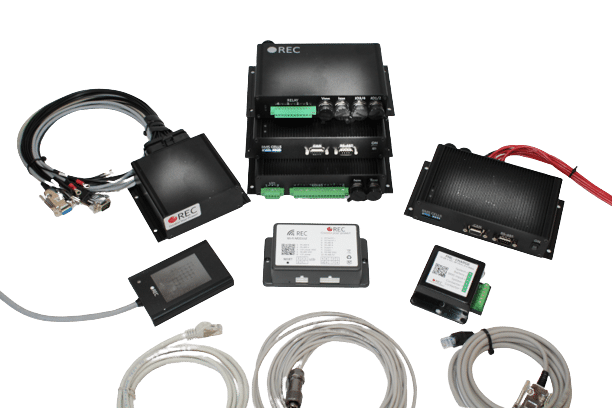Looking for any help I can get. I bought 2 x 12.5kw (25kw) LiFePo batteries from China. By themselves the batteries are great. They charge up to full just fine and thats where the problem begins.
36 x 330w Jinko Cheetah panels
2 x Sunny Boy 6.0 inverters.
2 x Sunny Island 6048 (in parallel).
This is On Grid with netmetering. I bought the Islands to take advantage of less expensive 48 volt options and for the on/off grid auto switching ability.
2 Felicity Solar 12.5 kilowatt batteries. The installers agreed to install it as ordered. Per SMA, the batteries are not supported and therefore they won't help.
Panels are on the roof.
There are now 3 distribution panels. Panel 1 is the original and they are leaving it as the backup panel with everything still on it. Panel 2 is the loads panel and contains 2 x 40 amp breakers (one for each inverter) and 1 x 60 amp breaker for the 2 islands. Panel 3 is for expansion, non-backed up loads.
The islands require batteries in order to function. No batteries = no islands. No islands means the PV won't function.
I'm looking for a solution that will allow me to keep the existing equipment.
The Islands are throwing an F141 error when the batteries reach full charge. So full batteries = system shuts down. The batteries cannot talk to the Islands so they are set up VRLA as per the manufacturers solution. The Islands are in parallel. The batteries are in parallel. Both Islands connect to the same bank at the same point.
I can't ship them back and I'm now stuck with them. Any suggestions the community can give are appreciated.
I was considering putting some gel batteries under the Islands to get it running and running a charge controller in between but am not sure how to make that happen.
36 x 330w Jinko Cheetah panels
2 x Sunny Boy 6.0 inverters.
2 x Sunny Island 6048 (in parallel).
This is On Grid with netmetering. I bought the Islands to take advantage of less expensive 48 volt options and for the on/off grid auto switching ability.
2 Felicity Solar 12.5 kilowatt batteries. The installers agreed to install it as ordered. Per SMA, the batteries are not supported and therefore they won't help.
Panels are on the roof.
There are now 3 distribution panels. Panel 1 is the original and they are leaving it as the backup panel with everything still on it. Panel 2 is the loads panel and contains 2 x 40 amp breakers (one for each inverter) and 1 x 60 amp breaker for the 2 islands. Panel 3 is for expansion, non-backed up loads.
The islands require batteries in order to function. No batteries = no islands. No islands means the PV won't function.
I'm looking for a solution that will allow me to keep the existing equipment.
The Islands are throwing an F141 error when the batteries reach full charge. So full batteries = system shuts down. The batteries cannot talk to the Islands so they are set up VRLA as per the manufacturers solution. The Islands are in parallel. The batteries are in parallel. Both Islands connect to the same bank at the same point.
I can't ship them back and I'm now stuck with them. Any suggestions the community can give are appreciated.
I was considering putting some gel batteries under the Islands to get it running and running a charge controller in between but am not sure how to make that happen.









